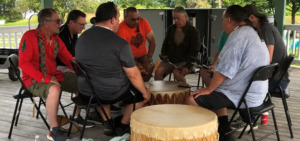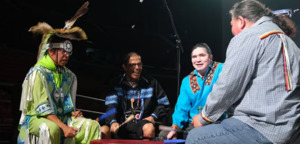With summer strawberries, bannock treats and Indigenous coffee in abundance, employees came together to mark National Indigenous Peoples Day through learning, conversation and knowledge sharing.
abundance, employees came together to mark National Indigenous Peoples Day through learning, conversation and knowledge sharing.
Algonquin College President and CEO, Claude Brulé, welcomed everyone to Algonquin College’s Indigenous Learning Commons (Nawapon) to celebrate the day. Continue reading
 special ceremony on June 21. The ceremony included Indigenous teachings about the importance of feasting a drum by an Elder who spoke about need for the “drum to never eat alone,” and the importance of the drum in Indigenous culture. The feast includes wild rice and fresh berries that were shared with College employees who attended the special ceremony.
special ceremony on June 21. The ceremony included Indigenous teachings about the importance of feasting a drum by an Elder who spoke about need for the “drum to never eat alone,” and the importance of the drum in Indigenous culture. The feast includes wild rice and fresh berries that were shared with College employees who attended the special ceremony.  Design, as well as the School of Advanced Technology received their credentials in front of family and friends at the Canadian Tire Centre in Kanata. #Algonquin2023
Design, as well as the School of Advanced Technology received their credentials in front of family and friends at the Canadian Tire Centre in Kanata. #Algonquin2023